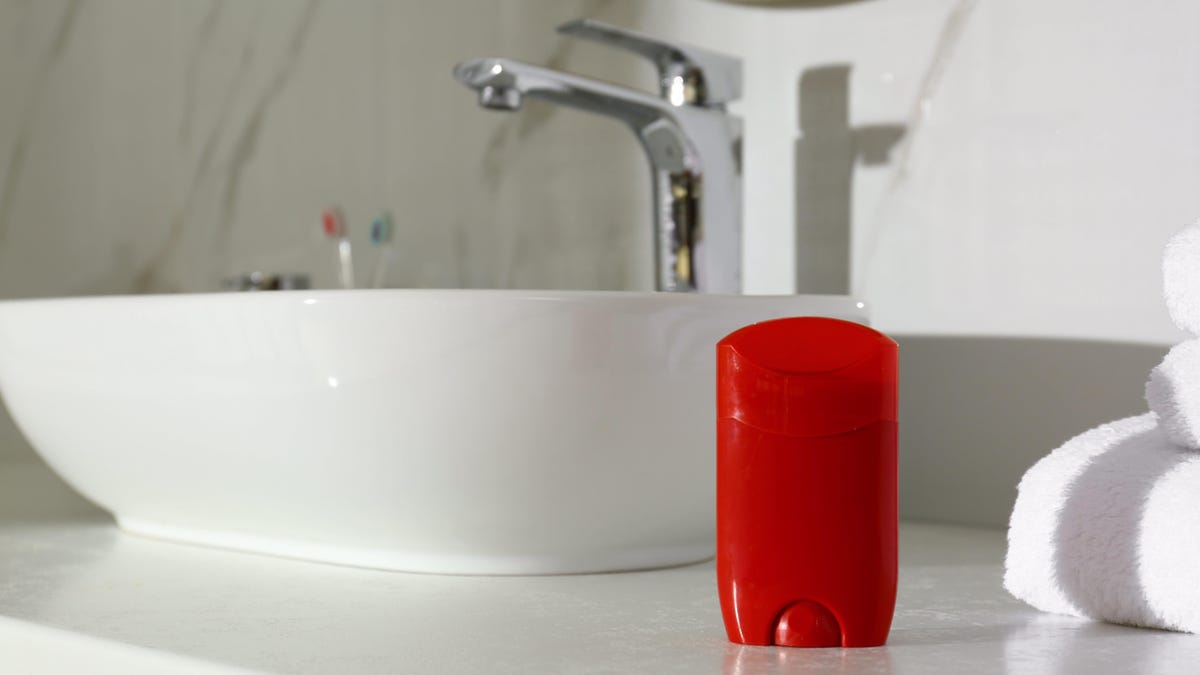How to Choose a Statement Chandelier That Isn’t Tacky
For some people—like my wife, who is fancy in her heart—a chandelier is the height of elegance. When we moved into our current home, she launched a scorched-earth campaign to have a chandelier installed somewhere, despite the fact that...

Photo: nadtochiy (Shutterstock)
For some people—like my wife, who is fancy in her heart—a chandelier is the height of elegance. When we moved into our current home, she launched a scorched-earth campaign to have a chandelier installed somewhere, despite the fact that this quirky house has exactly zero appropriate places for one. I once joked that the only place we could put a chandelier would be the bathroom, and she got a thoughtful look on her face that shut me real quick.
The chandelier got this reputation for glamour the same way most things did: Back in the olden days, the only folks who could afford all the candles a chandelier required (and thus could actually effectively illuminate their homes at night) were rich, and here we are centuries later trying to replicate the look and the status it implies. Plus, chandeliers are terrific statement pieces in home decor—they add a lot of visual bang to any room (even a bathroom, I suppose).
But choosing a chandelier is more complicated than you think. In fact, if you have a chandelier in your house, there’s a pretty good chance it is the wrong size, it is in the wrong place, or it is simply hideous. Here’s why, and how to fix it.
Chandeliers should make a statement, but a good one
The main challenge with choosing a chandelier lies in its essential function, which actually is not to light up a room. Chandeliers are meant to be statements—eye-drawing elements that make rooms seem grand, tie together designs, and make your guests exclaim in admiration. That encourages a certain recklessness because some chandeliers will get a version of the reaction you’re looking for: People will say, “Oh, my!” when they walk in the room, even if they mean it in the exact opposite way you were hoping for.
G/O Media may get a commission

Up to $100 credit
Samsung Reserve
Reserve the next gen Samsung device
All you need to do is sign up with your email and boom: credit for your preorder on a new Samsung device.
Choosing the wrong chandelier is usually a function of shopping in isolation. A light fixture that looks great in a catalog, on a computer screen, or in a showroom might be a beautiful piece of design by itself, but transform into a monstrosity of bad taste or incorrect proportions when you install it in your home. When choosing a chandelier, there are a few main aspects to consider, and each one needs to be contextualized with the space the chandelier will actually occupy.
Consider your overall decorating style
First and foremost, a chandelier is part of your overall decorating style in the space—it needs to work with every other design aspect of the room. If you buy a chandelier because it looks cool in some other context, the chances that it will complement your foyer, dining room, or other space are pretty slim. Of course, sometimes a contrasting piece can really pull a look together, so this doesn’t mean you have to match your room’s design precisely—but you do need to be thoughtful about how it’s going to coordinate.
This means choosing complementary materials (like metals that match other hardware in the room), but it also means considering the “busyness” of the room. If you’ve done it up with swirling wallpaper patterns and other detailed design elements, you’ll want to carry that over into an intricate chandelier. If the room is pretty neutral and clean, a simpler chandelier will probably be a better choice.
One final aspect to consider is the visual “weight” of your chandelier. A chandelier that is composed of thin, wiry stems will look light and airy compared to a chandelier that has a more cylindrical or bulky design. Choosing a visual weight that contrasts with the furniture and other elements in the room is a good idea.
Consider the chandelier’s size and height
Sizing a chandelier is tricky because it’s meant to be a statement and a focal point. That encourages folks to go big or go home, resulting in oversize fixtures that dominate, conquer, and smother a room. There are a couple of rules of thumb you can use to ensure your chandelier isn’t too big (or too small):
In dining rooms where the chandelier will be hung over a table, your chandelier’s diameter should be approximately one-third the size of your table. For other rooms, add the length and width of the room and use that number in inches to determine the size of the chandelier. For example, if your foyer is 10 feet by 12 feet, you’re looking for a chandelier that’s about 22 inches in diameter. The height of the chandelier itself depends on the room’s ceiling height. The rule of thumb here is roughly 2.5 inches of chandelier for every foot of ceiling height. If you have 10-foot ceilings, you’ll want a chandelier about 25 inches tall.Note that these are rough guides. Once you have a ballpark figure for your chandelier, consider the space visually. Since the whole point is to make a statement, going a bit larger is usually perfectly fine as long as you have a rational starting point. And if your chosen chandelier is subtle, making it a bit taller than the guides suggest might be a good idea.
The placement height of a chandelier is a classic way to screw up. If you’ve ever sat at a dining room table that required you to peer around a too-low chandelier to see the people across from you, you have experienced poor chandelier height firsthand. Here’s how to avoid that:
When placed over a table, the bottom of the chandelier should be at least 30 inches away from the table surface, but typically no more than 34 inches or it will feel like it’s in another time zone. When in a room without a table, it’s a pretty practical consideration: You want people to see the chandelier, but not bang their heads into it as they walk through the space. That means there should be about 7 to 8 feet between the bottom of your chandelier and the floor.Consider the chandelier’s placement
This is one of the easier decisions to make when it comes to chandeliers. In a room where it will hang over a table, center it over the table even if that’s not the center of the room. Otherwise, hang it where you want to draw the eye. That doesn’t have to be the center of the room—it might be over a reading nook or seating area, the end of your bed, over the toilet (I kid!), or just in a spot that needs some visual balance. If you’re not sure where to put it, the center of the ceiling pretty much always works.
And finally, consider its function
Finally, make sure your chandelier has a dimmer function. Lighting should be a dynamic tool—having a chandelier as bright as the sun during an intimate dinner party will kill the mood, but sometimes you might actually want a well-lit space. Being able to adjust the intensity of your chandelier will be the final touch that makes your chandelier choice the right one.

 Troov
Troov 

































